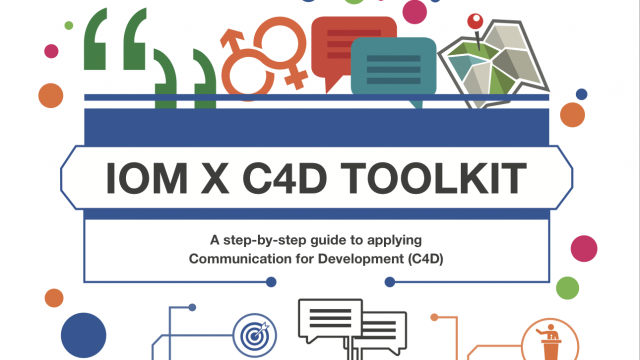This phase includes the implementation of the activity. Mobilizing key stakeholders who were involved in the development of the communication activity should also be part of dissemination. By virtue of having applied participatory processes, there should be an established strong network of partners (such as trade unions, healthcare units, migrant workers organizations, counter-trafficking NGOs, youth groups, etc.) who are pushing out the materials through their unique networks. This is one of the benefits of employing a highly consultative, participatory approach when developing materials, as it creates greater opportunities for dissemination.
Refer back to the Communication Channel Characteristics table and the media consumption data. What is the target audience watching/listening to/attending/etc. and where? Using a mix of traditional communication channels combined with interpersonal communication through informal networks is ideal for stimulating and promoting behaviour change. Interpersonal or two-way communication can strengthen the engagement with the audience especially if trying to communicate more complex issues or behaviours. Mass media is also useful for reinforcing messages that may be discussed through less formal outreach methods.
If the dissemination channels are limited (due to expertise or cost), think about working with partners. Local partners can help increase the impact of activities by providing expertise and resources, and are usually respected by the community because of their involvement in social issues.
Some of these local partners can include:

TIP: Mix of communication channels
Think about a mix of communication channels such as a print media campaign followed by targeted workshops with audio-visual materials and a facilitator to lead discussions on these materials. This approach will give the audience the most exposure to the key messages.
The audience has time to consider the messages through interpersonal communication, and the print materials act as message reinforcements.
When selecting a mix of communication channels, be sure to consider the following questions:
- Does the activity and channel that’s being used directly target the audience? If so, how?
- Will the audience be motivated by the activity?
- Is the channel and activity timely and efficient?
ENGAGE YOUR AUDIENCE
Be sure to mobilize a large number of partners and stakeholders to help implement activities
and develop a broad sense of ownership. Offer different ways partners and stakeholders can be involved, such as for a radio program, invite the audience to participate in listening groups, or have them suggest questions for the programme. Organizing panels at media events can also be a good way to include diverse partners.
Have you:
- Selected communication channels that are appropriate for the messages needed to communicate to the primary, secondary and/or tertiary audience?
- Identified partners that can help in the dissemination of the materials?
- Considered using a mix of dissemination channels?c






